A Warrior’s Quest: A Retrospective of Square-Enix’s Classic RPG Series
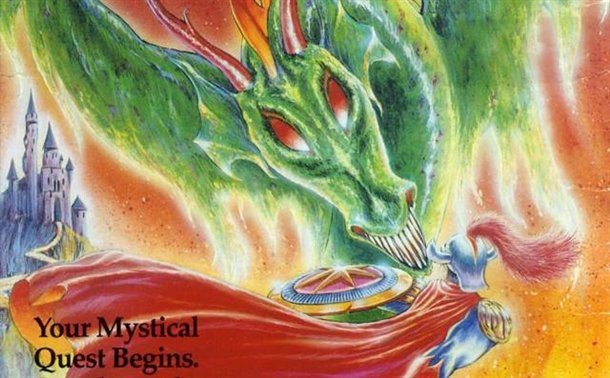
In the West, series like Call of Duty and Grand Theft Auto are about as big as a game can get, but in Japan, few franchises stand taller than Square-Enix’s Dragon Quest. First released in 1986, Dragon Quest is credited with establishing the basic template by which many RPGs would be made. Dragon Quest and its successive spin-offs have had such an enormous impact on the market that the series is arguably more significant than western-appreciated brands like Final Fantasy.
Enix’s monumental RPG not only introduced a number of RPG features to the world, but it is also the first game in history to have a soundtrack performed by a live orchestra. In Japan, nearly every entry in the series has seen anime, toy, and manga adaptations. Meanwhile, Dragon Quest has only ever achieved moderate success in the West. What are we missing? To examine this question – and in anticipation of the release of Dragon Quest VI: Realms of Revelation on DS on February 14 – we take a retrospective glance at the series’ history.

Dragon Warrior – NES – August 1989
The original Dragon Quest was released in Japan in 1986, but it took nearly three years to migrate west. When the series finally did arrive, its title had to be changed to avoid a trademark conflict with Simulations Publication’s pen-and-paper RPG Dragon Quest. While the Japanese took to Dragon Quest almost immediately, American audiences didn’t know what to make of the series. Dragon Warrior was one of the first encounters westerners had with a Japanese RPG, and its individuality worked against it.
Despite poor U.S. sales, Dragon Warrior established many elements that have made the series what it is. Players fought random turn-based battles, explored dungeons, and took on the role of a hero who gradually powered up throughout his journey. Players also fought many of the series’ recurring monsters for the first time, included slimes, which would become Dragon Quest’s mascot. Dragon Warrior offered an experience that any gamer would be familiar with today, but back in 1986 it was almost too novel.

Dragon Warrior II – NES – December 1990
Dragon Warrior II was released in Japan in 1987 under the title Dragon Quest II: Akuryo no Kamigami (Pantheon of Evil Spirits). The game's story centers on the prince of Midenhall, who is ordered to stop an evil wizard after he destroys Moonbrooke Castle. This entry is notable for being the first game in the series where players could control a party of multiple characters – the first Dragon Quest focused on a single hero.

Dragon Warrior III – NES – June 1991
As we’ll see, crazy subtitles persist in the Dragon Quest universe. When it released in Japan in 1988, Dragon Warrior III was called Dragon Quest III: Soshite Densetsu e… (And Thus Into Legend…). While Dragon Warrior III ended the story thread for the original Dragon Quest trilogy, it is actually a prequel that takes place before the first game. The title proved so popular in Japan – selling nearly 4 million units – that news reports began to circulate that children were skipping school to play the game. An urban legend quickly formed, claiming that the Japanese government outlawed future Dragon Quest titles from releasing on school days. There is no such law, but publisher Enix recognized the effect its series had on the Japanese youth and started releasing successive entries on the weekend. Meanwhile, in the U.S., gamers were still too busy playing Mega Man 3 and Commander Keen to take notice.

Dragon Warrior IV – NES – October 1992
Called Dragon Quest IV: The Guided Ones in Japan, Dragon Warrior IV differed from other entries in the series in that it broke the game into five distinct chapters, each focusing on a different protagonist. Since the rest of the player’s party became NPCs in the final chapter, Dragon Warrior IV featured an artificial intelligence system called Tactics, which allowed players to develop strategies that would guide their teammate’s actions. Truly ahead of its time, Tactics can be seen as a kind of precursor to Final Fantasy XII’s gambit system, which was still fifteen years out.

Dragon Warrior Monsters – Game Boy Color – January 2000
Dragon Warrior Monsters wasn’t the first of the series’ spin-offs, but it was the first to hit western shores. Monsters was also the first Dragon Quest game to make it into the European market. In the Monsters series, the player’s hero doesn’t participate in battle. Instead, players capture, breed, and raise monsters that fight for them. If that sounds similar to Pokémon, that’s because it is. Oddly, this title was released for the Game Boy Color, but since the cartridge was backward compatible with older versions of the Game Boy, that didn’t stop anyone from playing the game.
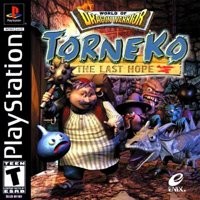
Torneko: The Last Hope – PSone – November 2000
Torneko is a sequel to a Japanese-only SNES title about Torneko Taloon, a merchant character from Dragon Quest IV who wishes to make his store famous by venturing into mysterious dungeons and finding rare items. This dungeon crawler was a flop in the West but proved so successful in Japan that it helped spawn the Mystery Dungeon series, another group of titles that American gamers care nothing about.
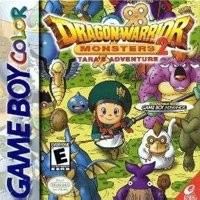
Dragon Warrior Monsters 2 – Game Boy Color – September 2001
This sequel to the Pokémon-style RPG was the first and only entry to come in two flavors: Cobi's Journey and Tara's Adventure. What else do you want us to say?
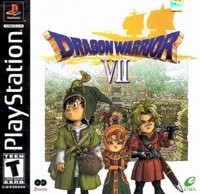
Dragon Warrior VII – PSone – November 2001
Finally, we return to the main series. You might be thinking, “Wait a minute! Number seven? We left off at Dragon Warrior IV.” Don’t worry; we’ll get to those missing entries in a minute. While the Dragon Quest series continued to tick up in Japan, the U.S. didn’t receive another numbered entry until this PSone title.
This title wasn’t fundamentally different from other entries in the series, but since this was the first DQ game on the PlayStation (even in Japan), the graphics and sound had improved significantly. The game was officially announced in 1996 and was originally planned for the Nintendo 64DD (a failed Disk Drive system that never made it to the U.S.), but it didn’t hit store shelves until 2001. Five years was an extraordinary amount of time for a game to be in development, especially back then (Duke Nukem Forever had only been in development four years, at that point).
This long gestation period might explain why the game was packed with so much content. Even if a player avoids side quests, a full playthrough can take upwards of 100 hours. Dragon Quest VII’s sales topped 4 million in Japan alone, making it the best selling PSone game of all time in Japan. In the U.S., Dragon Warrior VII barely cleared 200,000 copies.
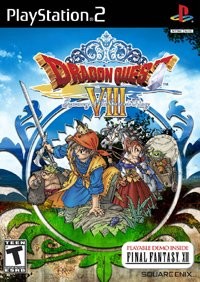
Dragon Quest VIII: Journey of the Cursed King – PS2 – November 2005
In 2003, Square Enix trademarked Dragon Quest in the West, allowing the publisher to finally start releasing its flagship series under its original name. Apparently that didn’t help them bring over the full subtitle, however. The game’s full name in the land of the ever-lengthening titles was Dragon Quest VIII: The Sky, the Ocean, the Earth, and the Cursed Princess.
Unlike previous entries, Dragon Quest VIII featured cel-shaded characters and scenery created by acclaimed Japanese manga artist – and creator of Dragon Ball – Akira Toriyama (although Akira Toriyama had worked on Dragon Quest titles previously, they just weren't cel-shaded). This was also the first entry in the series to feature fully three-dimensional environments. Unlike the Japanese release, the North American localization featured voice acting, making it the first entry in the series to do so. Sometimes it pays to get things late.
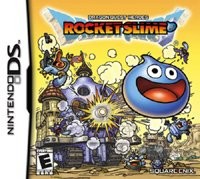
Dragon Quest Heroes: Rocket Slime – DS – September 2006
This sequel to a Japanese only action-adventure GBA title stars one of the series’ mascots – a slime named Rocket. The Japanese version had a title that humorously translates into Slime of Gusto Dragon Quest: Tails Brigade and the Giant Tank. Wonder why they changed it?

Dragon Quest Monsters: Joker – DS – November 2007
The 2003 GBA title Dragon Quest Monsters: Caravan Heart was only published in Japan, so Joker was the first DQ Monsters game to hit the states in nearly six years. This was also the first entry in the series to feature online play.
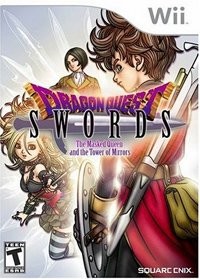
Dragon Quest Swords: The Masked Queen and the Tower of Mirrors – Wii – February 2008
This first-person adventure spin-off was really a spiritual sequel to a Japanese game called Kenshin Dragon Quest. Kenshin was marketed as a television game: The whole set didn’t require a console to play, but plugged directly into a television and used a fake sword that allowed players to swing at their TV and destroy enemies. It may sound a lot like a Nintendo Wii rip-off, but Kenshin came out in 2003, three years before details about Nintendo’s console were even released.
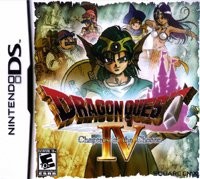
Dragon Quest IV: Chapters of the Chosen – DS – September 2008
A 2001 PSone remake of Dragon Quest IV added a sixth story chapter that saw the hero’s party avenge one of their fallen friends and start putting the world back together. The remake’s improved graphics and sound were great for fans, but the remake was only ever released in Japan, so western DQ fans had to wait another seven years before this extra content was released on DS.

Dragon Quest V: Hand of the Heavenly Bride – DS – February 2009
Originally released in 1992 for the Japanese SNES (and remade for the Japanese PS2 in 2004), Dragon Quest V never made its way stateside until this DS offering. The title introduced a gameplay mechanic in which monsters from random encounters could offer to join the player's party. The original Dragon Quest V is also regarded as the first game in history where players could play as a woman who became pregnant and gave birth.
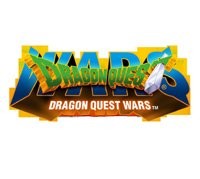
Dragon Quest Wars – DSi – September 2009
Dragon Quest Wars is a four-player turn-based strategy game designed by Intelligent Systems and published via Nintendo’s DSiWare download service. It was well received by critics, but may not have sold well due to Nintendo’s debilitated online infrastructure.
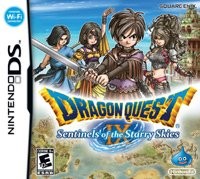
Dragon Quest IX: Sentinels of the Starry Skies – DS – July 2010
While Dragon Quest has primarily been a console series, Dragon Quest IX is the first of the series’ main entries to release on a handheld device first. Dragon Quest IX is also the first game in the series to focus primarily on multiplayer and the first entry without random encounters. Players could skip battles since enemies were visible on the map.

Dragon Quest VI: Realms of Revelation – DS – February 2011
Like Dragon Quest V, DQ VI never had an official English translation until its DS release. Finally, the entirety of the main Dragon Quest series is available in the U.S. (Read our review here.)

What does the future hold?
Dragon Quest shows no signs of slowing down. Last year Dragon Quest Monsters: Joker 2 released in Japan for the DS and it sold over a million units – in a country with almost a third our population. A U.S. release hasn’t been announced. At the same time, Square-Enix has promised that it is working on Dragon Quest X for the Wii. The game will likely release in the U.S. to sales that are a fraction of what it will do in Japan. Dragon Quest may not appeal to American sensibilities, but for now the Japanese audience is big enough to keep carrying the Dragon Quest torch. Maybe someday, someone other than Phil will understand what the big deal with this series is all about.

Get the Game Informer Print Edition!
Explore your favorite games in premium print format, delivered to your door.
- 10 issues per year
- Only $4.80 per issue
- Full digital magazine archive access
- Since 1991









